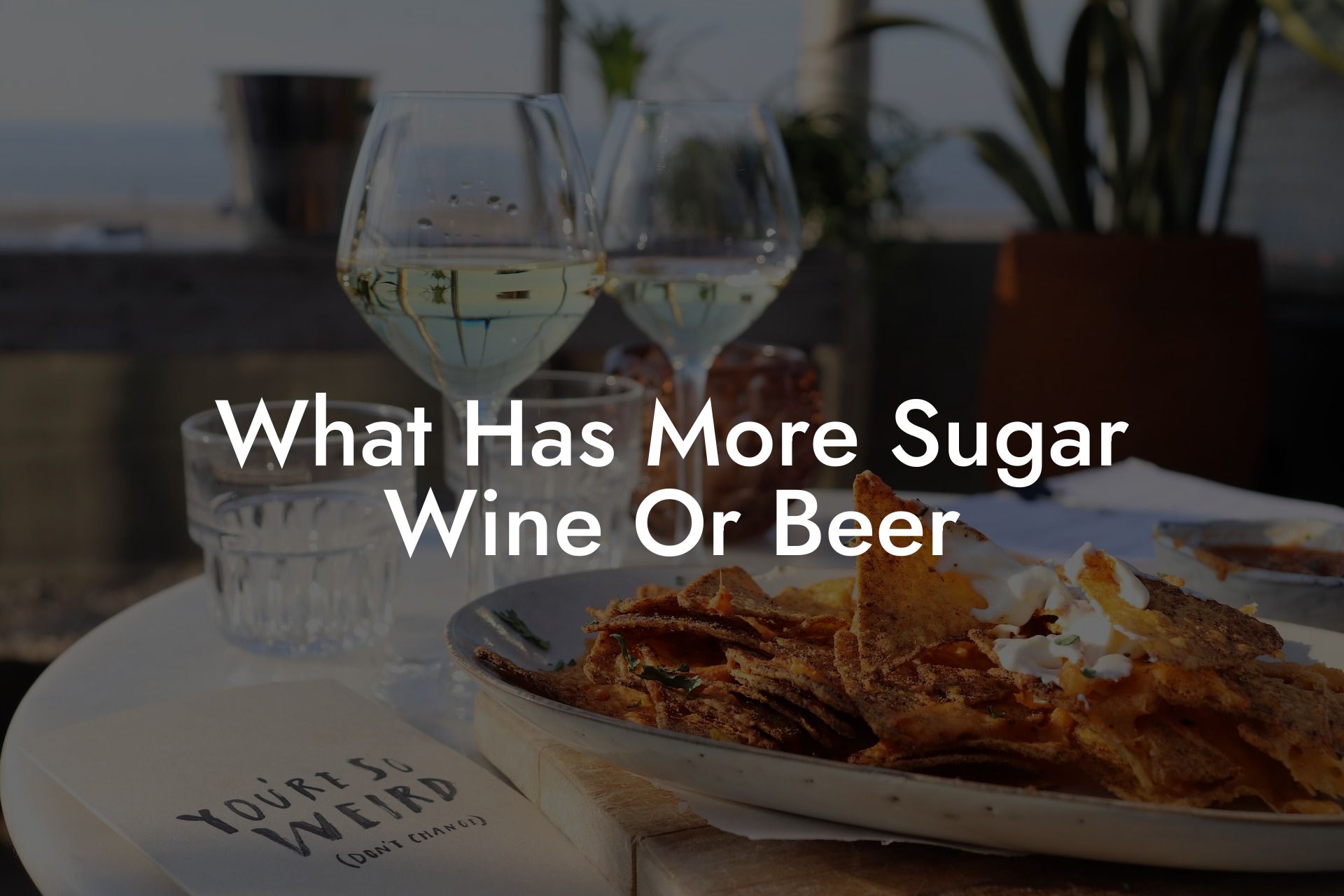Instead of having a sugar-loaded soda, many people choose to sip on a glass of wine or have a cold beer, considering them to be healthier alternatives. But, have you ever wondered how much sugar is actually lurking in your favorite alcoholic beverages? In this article, we'll reveal the sugar content of wine and beer, giving you the chance to make an informed decision for your next indulgent moment.
What Has More Sugar Wine Or Beer Table of Contents
Understanding Sugar Content in Alcoholic Beverages
How Sugar Enters the Picture
Sugar is a natural component of the fermentation process in creating alcoholic beverages. Grapes, used to make wine, are rich in sugar, while barley, used to make beer, is high in carbohydrates. When yeast is introduced, it consumes these sugars and carbs, producing alcohol and carbon dioxide. The remaining unfermented sugar affects the taste and sugar content of the beverage.
Comparing the Sugar in Wine and Beer
Wine: Sweet vs. Dry
The sugar content in wine can vary significantly, depending on the type of grape used and the winemaking process. Generally, wines are categorized as dry, semi-sweet, or sweet. Dry wines have little to no remaining sugar, while sweet wines can have a high sugar content. Here's a rough guide to the sugar content in various types of wine:
Do You Want to Win a Free Bottle of Wine?
Don't miss out on the opportunity to win a free bottle of wine every week.
Enter our weekly prize draw today!
- Dry white wine: 1-2 grams of sugar per 5-ounce glass
- Sweet white wine: 3-7 grams of sugar per 5-ounce glass
- Dry red wine: 2-3 grams of sugar per 5-ounce glass
- Sweet red wine: 8-12 grams of sugar per 5-ounce glass
- Dessert wines: 12+ grams of sugar per 5-ounce glass
Beer: Craft vs. Commercial
In comparison to wine, beer typically has less sugar. Most beers contain between 0 and 6 grams of sugar per 12-ounce serving. The level can vary depending on the beer style, with lagers and light beers containing less sugar and dark ales and stouts containing more. Here's a rough breakdown of sugar content in beer:
- Light lager: 0-2 grams of sugar per 12-ounce bottle
- Regular lager: 1-3 grams of sugar per 12-ounce bottle
- Dark lager: 3-5 grams of sugar per 12-ounce bottle
- Ale: 2-6 grams of sugar per 12-ounce bottle
- Stout: 4-6 grams of sugar per 12-ounce bottle
What Has More Sugar Wine Or Beer Example:
Imagine you're at a social gathering where both wine and beer are served. Knowing your personal preferences, you can make an informed decision based on the sugar content of each beverage. If you typically enjoy dry red wine, you'll be consuming roughly the same amount of sugar as you would with a light lager beer. However, if you gravitate towards a sweet white wine, you'll be consuming more sugar than you would with most types of beer.
Now that you're aware of the sugar content in wine and beer, you can make informed choices when deciding on your go-to tipple. In general, wine tends to have a higher sugar content, especially when compared to light or regular lagers. However, the difference between a dry wine and a heavier beer may be minimal. So, it's all about finding the balance that works for you.
We hope you've found this article both enlightening and enjoyable. If so, we encourage you to share it with your fellow wine and beer lovers. And don't forget to explore the other fascinating guides and articles on Black Wine Club, where we not only unravel the mysteries of the wine world but also introduce you to some fantastic wine and electronic music events!
Do You Want to Win a Free Bottle of Wine?
Don't miss out on the opportunity to win a free bottle of wine every week.
Enter our weekly prize draw today!












